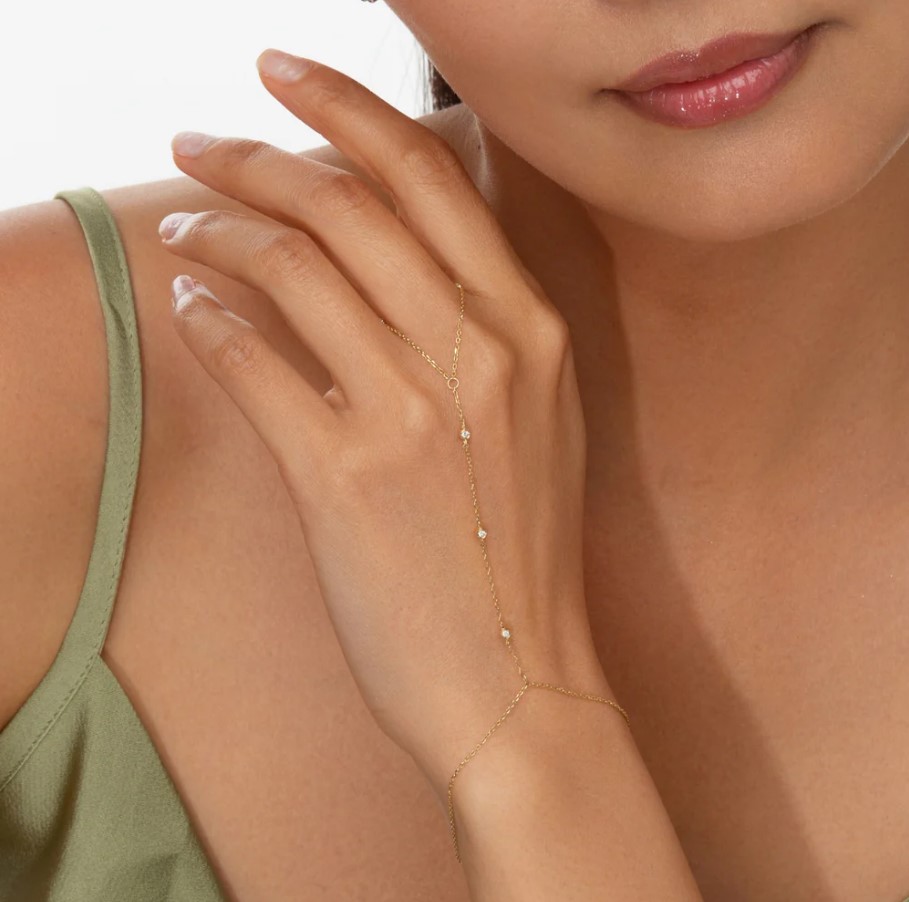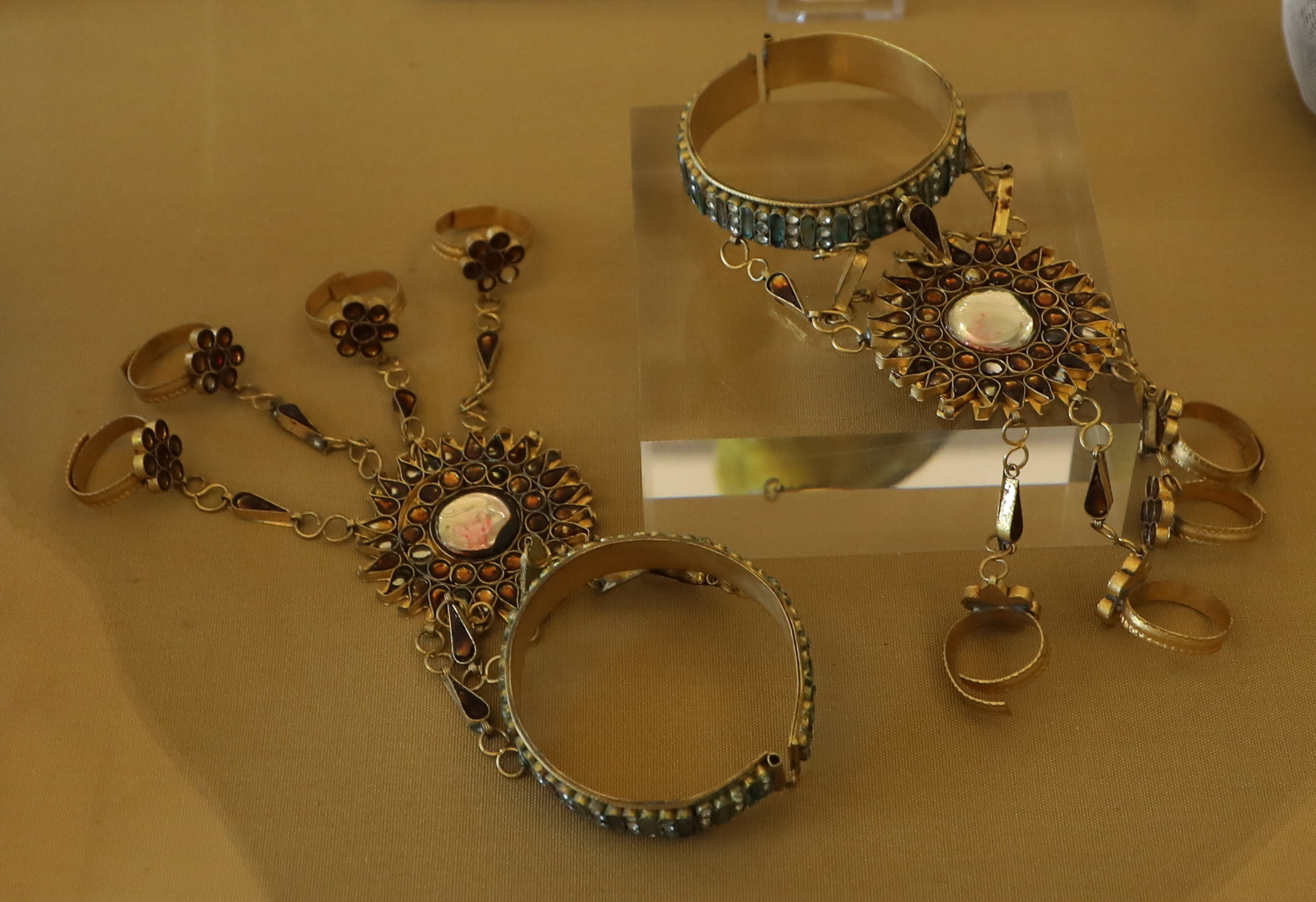Slave Jewelry is all the rage. It is all the jewelry-crazy side of TikTok can talk about. If you have come across this jewelry with its jarring moniker but super aesthetic appeal, you may be wondering what it is all about, what your options are, and how you can get your hands on it. Let’s answer those questions, shall we?
What is Slave Jewelry?
Slave jewelry refers to a jewelry style that usually consists of a bracelet or ring attached by chains to other rings or bracelets. This kind of jewelry often demonstrates detailed designs and several linked components, ranging from basic chains to lavish constructions encrusted with gems and other materials.
What Types of Slave Jewelry Exist Today?
- Manillas/Cuff Bracelet (West African Slave Bangles)
Picture horseshoe-shaped wrist cuffs made from different metals like bronze, iron, copper, and sometimes(although rare) gold. They were typically found in West Africa and, depending on the material and added craftsmanship, would be worn by people to show their class and marital status. Then, eventually, they were used by Europeans for the slave trade. This jewelry was a gorgeous statement piece that was usually large and in charge and came in different materials and designs.
- Hand Chains or Hand Flowers (Indian Slave Bangles)
Hand chains, also known as Haat Patta or Hand Flowers. They are exactly what they sound like — a chain connected with the bracelet and rings. It is an enchanting piece that easily catches the eye. These ornate pieces are Indian and were and are typically worn by brides.
Hand chains constitute the essence of Indian heritage and values, representing the integrity and fidelity of the married partnership. In the last few years, hand chains have been donned by women beyond marriage as eminent costume jewelry, as they complement all dresses for any event and can never go out of vogue.
- Belly Dancer or Harem Bracelets (Middle Eastern and Indian)
Belly dancer bracelets or harem bracelets are intricate jewelry meant to invoke a sense of mystery and beckoning beauty of harem women and belly dancers. They make beautiful sounds and shapes with intricate designs and bells.
Historically, colors and belly dancer bracelets were worn with purpose. Women who would belly dance would wear bracelets carrying an immense symbolism of charm, beauty, and womanly culture. However, in the 21st century, this fashion statement has come back and is perfect for any festival or party styling, especially for all you gals embracing a bohemian gypsy festival look this summer. The harem or belly dancer bracelets are the perfect style statement without making you appear uncultured and unrefined.
- Chokers (Various Cultures)
Chokers are another type of slave Jewelry that has been well-received across the globe for generations. From ancient Egyptian royals to the 1990s grunge kids, chokers have been a woman’s best accessory friend for centuries. Chokers have historically been worn to reflect status and beauty and even to offer some form of protection. While they have a murky past associated with slavery, they have cleaned up their reputation and returned as gorgeous pieces that women love to accessorize with.
How to Style Slave Jewelry
- Casual Chic: The best way to rock the simple cuff bracelet on daily use will be to pair it up with a light white shirt and a beautiful pair of high-fitted pants. Added on with a few rings on the hand and ta-da, here you go with the perfect layered style.
- Evening Glamour: Why not add up more drama with a beautiful hand chain or belly dancer bracelets? The right match will be a beautiful hand chain diamond bracelet with a total figure-hugging super-fitted or bias-cut dress or a mild, sexy one. Couple up with strappy heels, and you’re good to go for the day.
- Office Elegance: Let’s face it; it’s difficult to find the right accessories to wear at work, but while difficult, it is not impossible. A great place to start is cuff bracelets and a choker for the extra step. Say you choose a beautiful silver manilla or cuff bracelet combination and an ornate cocker. The best outfit would be to pair these slave bracelets and necklaces with a well-tailored long-sleeve crop navy business shirt and fitted pants or a pencil skirt. Complete the look with a striking pair of pointy-toe heels, and you have a not-so-boring yet professional-looking outfit.
Ethical Considerations and Controversies
Now, let’s cut to the chase. The name of this jewelry implicates a terrible term that will, at best, cause unease to those who learn of it and, at worst, can conjure unpleasant thoughts and memories of a dark past for some. When, for the majority of these pieces, that horrible term had nothing to do with their culture’s past, then surely we can find recourse to appreciate those cultural histories once more without reinforcing ideas of human bondage. I’ve heard them called “Heritage Jewelry” by some activists. The term “Cultural Adornments” is currently being preferred by others. However, to reclaim the aesthetic and the history, the depth of owning and wearing these objects is all we can do to chip away at the seemingly insurmountable negative titling.
Riding The Slave Jewelry Wave
So, if you’re seeing these beautiful pieces all around but have cold feet as to their shady name, be aware that nothing is dark about them. These pieces are a piece of history and are quite beautiful in origin.







Add Comment